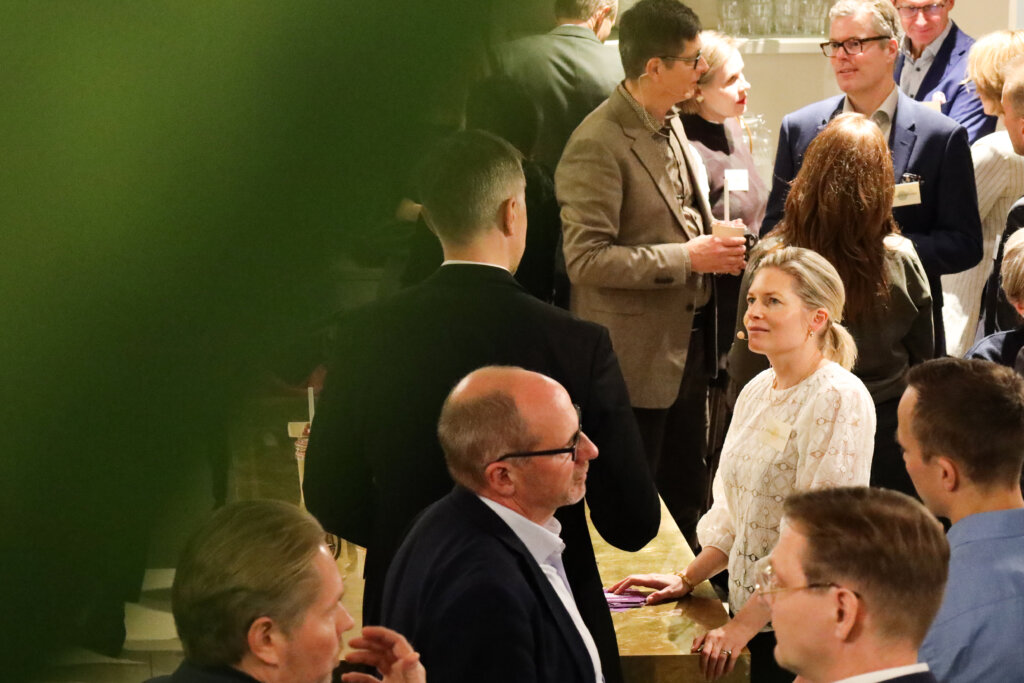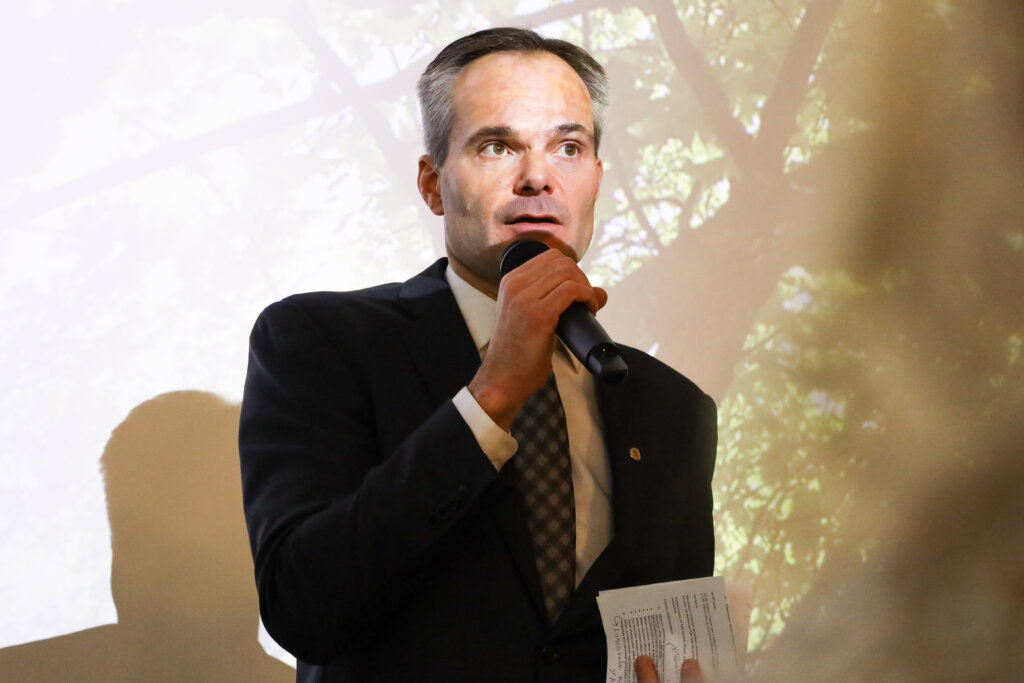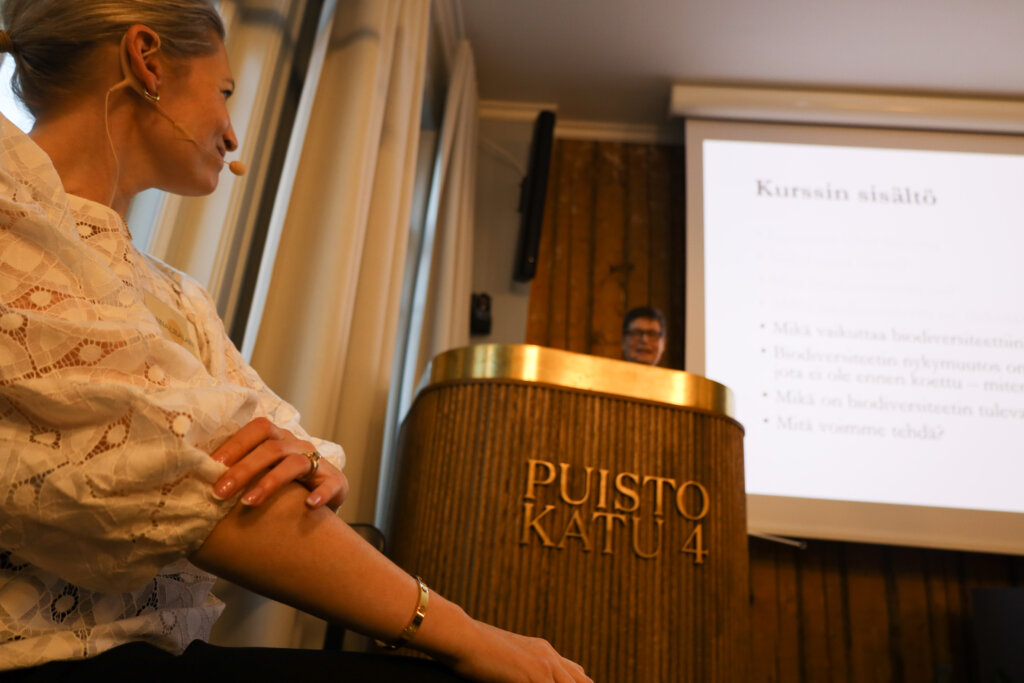CEOs of Finland’s biggest companies gathered at Puistokatu 4 to learn about biodiversity
On 30 October, a Biodiversity Leadership Course for 25 Finnish business leaders was held at Puistokatu 4.

On 30 October, a Biodiversity Leadership Course for 25 Finnish business leaders was held at Puistokatu 4. Among the participants were the CEOs of Metso, Fortum and Ilmarinen. The course was organised in cooperation with Puistokatu 4 by the Climate Leadership Council, the Forum for Environmental Information and the REC Research Unit of the University of Helsinki.
“The aim of the course was to help CEOs understand the basics of biodiversity and to provide confidence in managing the companies with biodiversity constraints in mind,” says Minttu Jaakkola, Executive Director of Puistokatu 4.
The course programme was prepared by biodiversity researchers and professors Anna-Liisa Laine and Tomas Roslin. In addition, award-winning environmental scientist and ecologist Gretchen Daily of Stanford University gave a lecture remotely. Greetings from policymakers were brought to the event by Minister of the Environment and Climate Kai Mykkänen.
 Minister of Climate and Environment Kai Mykkänen.
Minister of Climate and Environment Kai Mykkänen.
Leaders reminded of threats but also of opportunities
In the course CEOs were reminded, for example, that natural capital is largely in private hands and its degradation is calculated to cause losses of up to $2.7 trillion by 2030.
At the same time, estimates suggest that biodiversity-friendly solutions have the potential for billions of dollars of growth, and Finland has an exceptionally large body of research to back them up.
“Our message to business leaders is that there are opportunities for pioneers in understanding natural capital. Natural capital is the engine of the economy, and only science can help us make the most of it,” said Anna-Liisa Laine.
The course content also underlined how a biodiversity-friendly measure is always also a climate action. For example, biodiversity-friendly land use is an effective way to increase carbon dioxide sequestration. As with climate actions, the effectiveness of biodiversity actions needs to be monitored over the long term, as there is a lag of up to decades between responses.
 Professors Anna-Liisa Laine and Tomas Roslin.
Professors Anna-Liisa Laine and Tomas Roslin.
Climate change is already reflected in business, will biodiversity be next in line?
Organisers of the course believe that the popularity of the course reflects a paradigm shift in business.
“Forward-thinking companies are realising that they also need to assess their operations on ecological grounds,” says Puistokatu 4’s Minttu Jaakkola.
Large companies have already woken up to climate change, which is reflected not only in their strategy papers but also in their operations. Jaakkola believes that biodiversity issues are the next big issue now seeking a foothold in corporate responsibility programmes.
“We wanted to target our message directly to business decision-makers as companies have a lot of social power. Business decisions play a crucial role in shaping the way we will in the future,” says Jaakkola.




